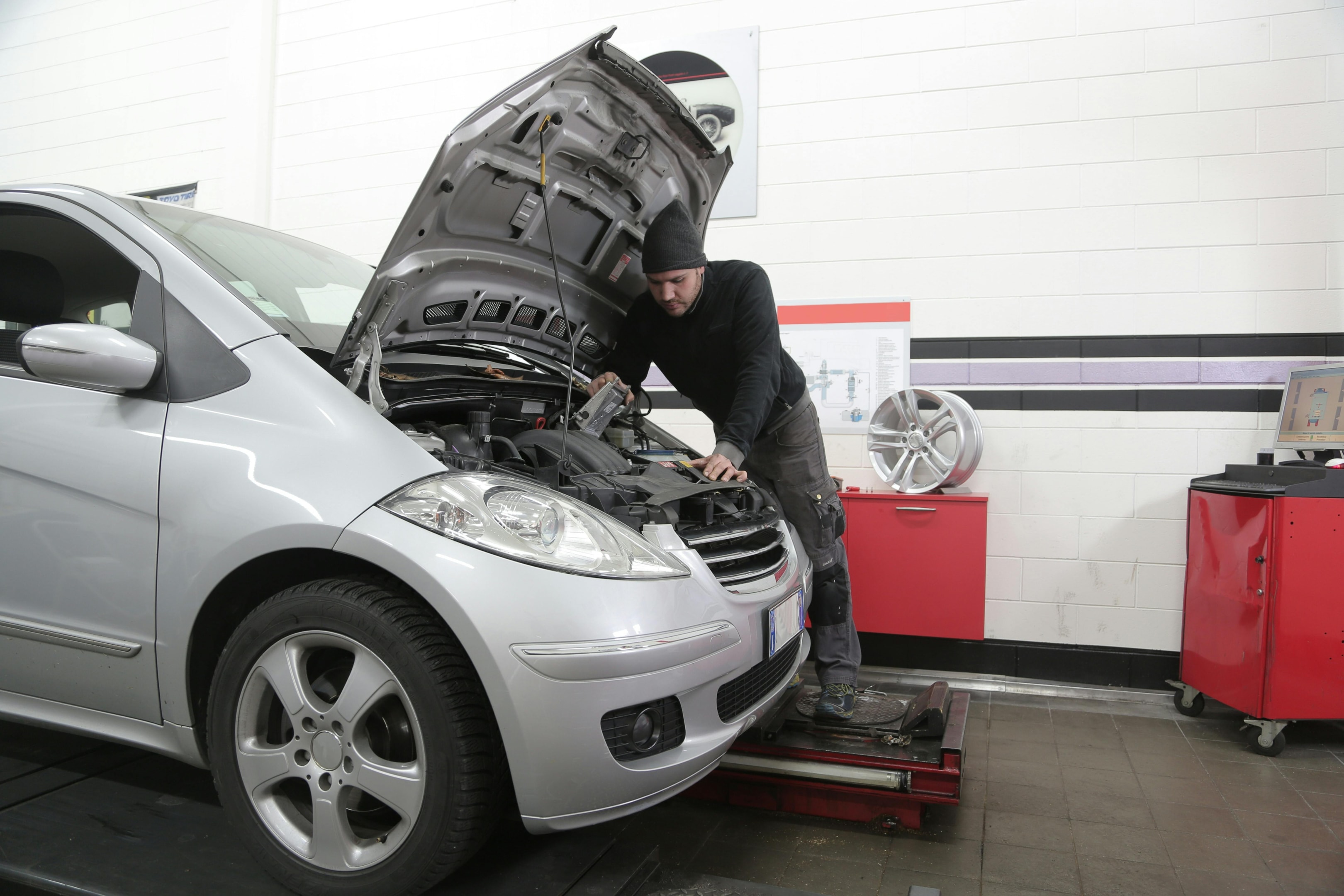
Starting a mechanic business in Australia can be a rewarding venture given the country’s growing automotive market. Whether you’re planning to set up a new auto repair shop or expand your existing services, a well-structured auto repair business plan is essential. This guide will walk you through the key components of a mechanic business plan, helping you set clear objectives and strategies for success.
What Is an Auto Repair Business Plan?
A business plan serves as a roadmap for your auto repair business. It outlines your business goals, strategies and the steps necessary to achieve them. This comprehensive guide is tailored to the Australian market, providing specific insights and requirements relevant to starting and operating a mechanic business in Australia.
Executive Summary
The executive summary provides a snapshot of your business plan. It should include:
- Business Name and Location: Clearly state your business name and location.
- Business Objectives: Define your short-term and long-term objectives.
- Services Offered: Summarize the services your mechanic shop will provide.
- Market Overview: Highlight key market trends and your target market.
- Financial Projections: Provide an overview of your projected revenues, expenses, and profitability.
- Funding Requirements: If applicable, state your funding needs and how you plan to use the funds.
Business Description
Business Structure
Determine the structure of your business, whether it will be a sole proprietorship, partnership, company or trust. Each structure has different legal and tax implications in Australia.
Business Location
Choose a strategic location for your mechanic shop. Consider factors such as visibility, accessibility and proximity to your target market. Ensure compliance with local zoning laws and regulations.
Services Offered
Detail the auto repair services your mechanic business will offer, including:
- General automotive repairs
- Scheduled maintenance and servicing
- Brake and suspension repairs
- Engine diagnostics and repairs
- Air conditioning servicing
- Tyre fitting and balancing
- Custom modifications and performance tuning
Unique Selling Proposition (USP)
Define what sets your mechanic business apart from competitors. This could be exceptional customer service, advanced diagnostic equipment or specialised services that are not commonly available in the area.
Market Analysis
Industry Overview
Provide an overview of the auto repair industry in Australia. Include relevant statistics, market trends and growth projections. Highlight any emerging technologies or changes in consumer preferences that could impact your business.
Target Market
Identify your target market. Consider factors such as:
- Demographics: Age, gender, income level, and occupation.
- Psychographics: Interests, values, and lifestyle.
- Geographic: Location and proximity to your mechanic shop.
Competitor Analysis
Conduct a thorough analysis of your competitors, including other auto repair shops. Identify their strengths and weaknesses, and determine how you can differentiate your services
Marketing Strategy
Branding
Develop a strong brand identity for your mechanic business. This includes your business name, logo, tagline and overall visual identity. Ensure consistency across all marketing materials.
Pricing Strategy
Establish a competitive pricing strategy. Consider factors such as the cost of parts and labour, competitor pricing and the perceived value of your services. Offer discounts or loyalty programs to attract and retain customers.
Promotional Activities
Outline your promotional activities to attract new customers and retain existing ones. This may include:
- Online marketing: Website, social media, and search engine optimisation (SEO).
- Traditional advertising: Flyers, brochures, and local newspaper ads.
- Partnerships: Collaborate with local businesses or car dealerships.
- Customer referrals: Encourage satisfied customers to refer others.
Customer Service
Emphasize the importance of exceptional customer service. Train your staff to be professional, courteous and knowledgeable. Implement a customer feedback system to continually improve your services.
Operations Plan
Equipment and Tools
List the equipment and tools required for your mechanic shop. Ensure you invest in high-quality, reliable tools to provide efficient and effective services.
Supplier Relationships
Establish relationships with reputable suppliers for automotive parts and equipment. Negotiate favourable terms and maintain good communication to ensure timely delivery of parts.
Staffing
Determine your staffing needs. Hire qualified mechanics and support staff. Provide ongoing training and development to keep your team updated with the latest industry advancements.
Workflow and Procedures
Develop standard operating procedures (SOPs) for your mechanic shop. This includes workflow processes, safety protocols and quality control measures. Ensure compliance with Australian workplace health and safety regulations.
Financial Plan
Startup Costs
Identify your startup costs, including:
- Lease or purchase of premises
- Renovation and fit-out costs
- Equipment and tools
- Initial inventory of parts and supplies
- Marketing and promotional expenses
- Working capital for day-to-day operations
Revenue Projections
Estimate your projected revenue based on your target market and pricing strategy. Consider factors such as the number of customers, average transaction value and frequency of visits.
Expense Projections
Identify your ongoing expenses, including:
- Rent or mortgage payments
- Utilities and insurance
- Salaries and wages
- Parts and supplies
- Marketing and advertising
- Maintenance and repairs
Profit and Loss Statement
Prepare a projected profit and loss statement for at least the first three years of operation. This will help you understand your expected profitability and identify any potential financial challenges.
Cash Flow Management
Develop a cash flow management plan to ensure you can cover your expenses and maintain a positive cash flow. Monitor your cash flow regularly and make adjustments as needed.
Legal and Regulatory Considerations

Business Registration
Register your auto repair shop business with the Australian Securities and Investments Commission (ASIC). Ensure you have an Australian Business Number (ABN) and if applicable, a Goods and Services Tax (GST) registration.
Licences and Permits
Obtain the necessary licences and permits to operate your mechanic business. This may include local council permits, trade licences and environmental approvals.
Insurance
Ensure you have appropriate insurance coverage for your mechanic business. This may include public liability insurance, professional indemnity insurance and workers’ compensation insurance. Consult with an insurance advisor to determine the best coverage for your business.
Risk Management
Identify Potential Risks
Recognize the potential risks your independent auto repair shops may face, including:
- Financial risks: Cash flow issues, unexpected expenses and economic downturns.
- Operational risks: Equipment failure, supply chain disruptions and staff shortages.
- Legal risks: Compliance with regulations, workplace health and safety issues and customer disputes.
- Market risks: Changes in consumer preferences, increased competition and market saturation
Mitigation Strategies
Develop strategies to mitigate these risks:
- Financial risks: Maintain a cash reserve, secure a line of credit and regularly review your financial performance.
- Operational risks: Implement preventative maintenance schedules, establish strong supplier relationships and cross-train staff.
- Legal risks: Stay informed about regulatory changes, maintain proper documentation and consult with legal professionals as needed.
- Market risks: Conduct regular market research, adapt your services to meet changing demands and invest in marketing and customer engagement.
Technology and Innovation
Automotive Diagnostic Tools
Invest in the latest automotive diagnostic tools to accurately identify and repair vehicle issues. Staying current with technological advancements will enhance your service quality and efficiency.
Software Solutions
Utilize software solutions for various aspects of your business, such as:
- Accounting software: Streamline financial management and ensure accurate bookkeeping.
- Customer relationship management (CRM) software: Manage customer interactions, track service history and automate follow-ups.
- Inventory management software: Monitor stock levels, order parts efficiently and reduce wastage.
- Appointment scheduling software: Allow customers to book appointments online and manage your shop’s schedule effectively.
Digital Marketing
Embrace digital marketing to reach a wider audience and engage with your customers:
- Website: Create a professional website that showcases your services, provides contact information and allows online bookings.
- Social media: Maintain an active presence on platforms like Facebook, Instagram and LinkedIn to connect with customers and promote your services.
- Online reviews: Encourage satisfied customers to leave positive reviews on platforms like Google My Business and Yelp to build your reputation.
Reach Out to Grey Space Advisory
Creating a comprehensive mechanic business plan can be challenging, but you don’t have to do it alone. At Grey Space Advisory, we specialize in helping small businesses like yours succeed. Our team of experts can provide personalised guidance on business planning, financial management and regulatory compliance.
For professional advice and support in setting up your mechanic business, reach out to Grey Space Advisory. Visit our website or call us at 9138 0610 to schedule a consultation. Let us help you turn your vision into a thriving business.
FAQs
How much does it cost to start a mechanic business in Australia?
The cost of starting a mechanic business in Australia can vary depending on factors such as location, size, and the range of services offered. Typical startup costs include leasing or purchasing a property, equipment and tools, initial inventory and marketing expenses. On average, you can expect to invest between $50,000 and $150,000.
What qualifications do I need to run a mechanic business in Australia?
To run a mechanic business in Australia, you need to have relevant qualifications and certifications in automotive repair. This typically includes a Certificate III in Light Vehicle Mechanical Technology or equivalent. Additionally, you may need a trade licence and other local permits.
How can I attract customers to my mechanic business?
To attract customers to your mechanic business, focus on providing exceptional customer service, offering competitive pricing and maintaining a strong online presence. Utilize digital marketing strategies, such as social media and online advertising, to reach potential customers. Additionally, encourage satisfied customers to leave positive reviews and refer others.
What are the key elements of a successful mechanic business plan?
A successful mechanic business plan should include an executive summary, business description, market analysis, marketing strategy, operations plan, financial plan, legal and regulatory considerations, risk management, and technology and innovation. Each section should provide detailed information and actionable strategies to help you achieve your business goals.
How can Grey Space Advisory help my mechanic business?
Grey Space Advisory offers expert guidance on business planning, financial management and regulatory compliance. Our team can help you create a comprehensive business plan, implement effective bookkeeping practices and navigate the complexities of running a mechanic business in Australia. Contact us for personalized support and advice.